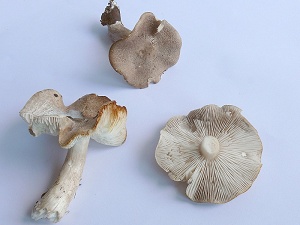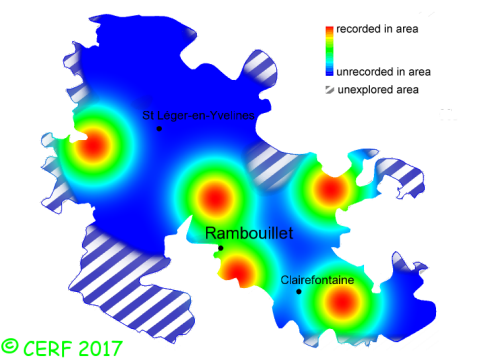| Tricholoma scalpturatum (Fr.) Quél. |
|
|
|
|
|
|
The cap is grey to fibrillose grey-brown on paler background, yellowing towards margin, convex then expanded, sometimes umbonate. The cap surface is with felted or fibrillose scales, in a concentric arrangement. The stem is white to greyish, then becoming yellow, with a discrete ring zone. The flesh is white, unchanging; its taste is mealy; the odour is mealy; its texture is fibrous. The gills are white, turning yellow in bruises, emarginate to adnexed . The spore print is white. This species is mycorrhizal. It grows on the ground, in broad-leaved woods, thickets, grassland, along paths, on a rather calcareous soil, mostly under beech, but also with oak, hornbeam, hazel, pine, poplar. The fruiting period takes place from June to December.
Distinctive features : Grey-brown cap, yellowing with age like the gills, especially at the margin; smooth white stem; mealy taste and odour Tricholoma scalpturatum is quite rare and localised in the forest of Rambouillet, and is frequent, more generally speaking . | ||
|
page updated on 14/01/18

